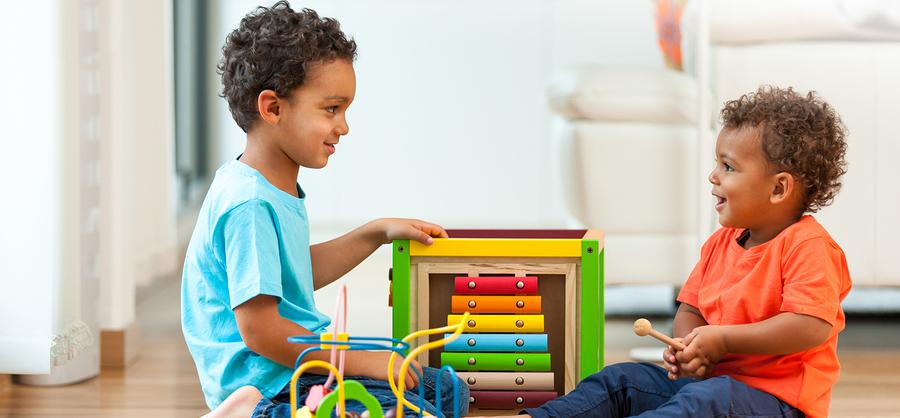Just as you'd make sure your home is safe for your kids, you should make sure their playthings are, too. Toy-related injuries are more common than you think -- they send more than 250,000 kids to the emergency room each year. But don't worry: Finding safe toys for kids just takes a little know-how.
Under the U.S. Consumer Product Safety Commission's toy safety standard, all toys for children ages 12 and under are tested by third parties according to guidelines set by the federal government. However, this doesn't apply to all toys, only certain types -- primarily those made by large manufacturers. That means it's still important to evaluate the safety of an item for yourself. Here are six tips to help you choose safe toys.
1. Consider Age
Making sure toys are age appropriate is a big factor in ensuring safety. Most toys have clear age ranges printed on their packaging, but also consider the individual child you're buying for. Are they mature for their age? Do they have a tendency to put things in their mouth? Do they have younger siblings who could access the toy, too? Thinking about age, interest, and skill level will help you when making your purchase.
2. Try a Small-Parts Tester
These testers, available on Amazon and at some toy stores, are cylindrical tubes that you can use to make sure toy parts aren't small enough for children to choke on. The tester is roughly the size of a toilet paper roll, so feel free to use one in a pinch. Anything that can pass through the tube isn't appropriate for children three years old and younger.
3. Avoid the Obvious Hazards
Toys with sharp ends or edges can easily injure kids, so be sure to avoid these. Projectile toys -- like darts, slingshots, or bows and arrows -- can cause facial or eye injuries. Meanwhile, toys with long straps or strings (over 7 inches), should be avoided because of the strangulation hazard.
4. Ask Questions
Small-batch or handmade toys from Etsy or other bespoke retailers usually aren't tested. If you'd like to gift a toy of this kind, ask the seller or maker plenty of questions so you can have a solid idea of the materials, functions, appropriate age range, and more.
5. Check for Recalls
Sometimes, toys that have been recalled are still on the shelves or available at resale shops. Check for recalls on the U.S. Consumer Product Safety Commission's website.
6. Look for Nontoxic
Craft supplies and other art-making items should say "nontoxic" on their labels. If they don't, they aren't appropriate for children.
With these strategies, finding safe toys for kids can be simple.




